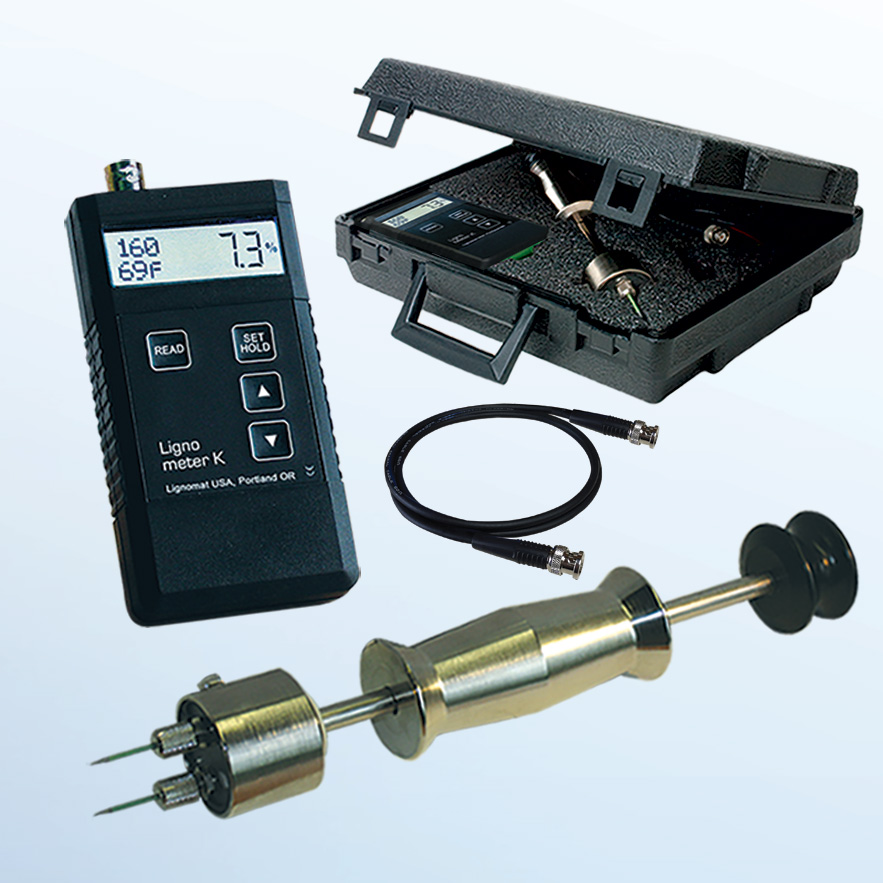Look Into the World of Moisture Meters: Everything You Required to Know
In the realm of moisture meters lies a globe of precision and practicality that often goes undetected. These gadgets, while seemingly uncomplicated, hold a wide range of details that can substantially impact numerous markets and applications. Understanding just how moisture meters operate, the various types offered, and their diverse usages can clarify their importance in making sure quality and performance. By checking out the details of wetness meters, one can reveal an important device that transcends plain measurement, supplying insights that can make a significant difference in many areas.
Just How Moisture Meters Work
Moisture meters operate by determining the electric conductivity or capacitance of products to identify the wetness web content present. These meters are indispensable devices throughout numerous industries, including building, farming, and woodworking. By utilizing different methods such as pin-type or pinless innovation, dampness meters supply exact analyses that assist experts make educated decisions.
Pin-type moisture meters work by putting the sharp pins right into the material being evaluated. On the other hand, pinless dampness meters make use of electro-magnetic signals to check a bigger area without causing any kind of damages to the material's surface area.
Despite the technique used, moisture meters play an essential role in preventing concerns such as mold and mildew growth, architectural damages, or product issues brought on by excess moisture. Recognizing exactly how these meters work is essential for making certain the high quality and integrity of products in various applications.
Kinds Of Moisture Meters
Provided the crucial duty wetness meters play in various markets, it is important to recognize the different kinds available to specialists for precisely assessing wetness degrees - Moisture Meter. There are mainly 2 primary kinds of moisture meters: pinless and pin-type wetness meters

On the various other hand, pinless moisture meters utilize electromagnetic sensor plates to check a larger location of the material without triggering any damages. This kind appropriates for promptly scanning big locations and is typically made use of for flooring, wall surfaces, and ceilings. Pinless meters are convenient for taking readings on completed surfaces without leaving any type of noticeable marks.
Both types of wetness meters have their benefits and are picked based on the certain requirements of the task handy. Understanding the differences in between these kinds is essential for specialists to make exact dampness assessments.
Applications Across Industries
Building experts count on wetness meters to analyze the wetness degrees in building products like wood, concrete, and drywall, which is essential for keeping structural stability and preventing problems like rot or mold and mildew. The flooring market makes use of wetness meters to gauge the dampness material in subfloors prior to installing different flooring treatments, avoiding expensive problems due to excess moisture. In the food market, dampness meters are utilized to monitor and manage moisture degrees in items such as grains, nuts, and dried fruits to maintain freshness and top quality.
Tips for Making Use Of Moisture Meters
When determining the wetness web content in numerous products,Use the dampness meter's calibration setups to ensure accurate readings. Calibration is important for the correct performance of a dampness meter. Prior to each usage, it is advisable to inspect and readjust the calibration setups according to the details product being tested. Additionally, make certain the meter is readied to the correct moisture range for the material you are gauging to acquire one of the most exact outcomes.
When using a pin-type moisture meter, insert the pins to the ideal deepness suggested for the material being examined. This makes certain that the wetness readings are taken from the proper deepness within the product, giving a much more accurate representation of its dampness material. For pinless moisture meters, bear in mind to preserve proper call with the material's surface area to get trusted analyses.
On a regular basis check and change the batteries in your moisture meter to stop incorrect analyses due to reduced power. When not in usage to prolong its life expectancy and preserve its precision, Store the meter in a secure and dry place. By complying with these pointers, you can make best use of the performance of your wetness meter and get specific moisture material dimensions across different materials.
Upkeep and Calibration
To ensure the accuracy of wetness web content dimensions, regular maintenance and calibration of the moisture meter are vital action in its proper functioning. Maintenance includes maintaining the dampness meter tidy and free from particles that could impact its analyses. It is visit this website essential to adhere additional hints to the manufacturer's guidelines for cleaning to avoid damage to the gadget. Furthermore, normal calibration is essential to validate the accuracy of the analyses. Calibration adjusts the moisture meter to make sure that it supplies regular and reliable results.
Calibration must be done regularly, especially if the dampness meter is made use of often or in vital applications where accurate dimensions are called for. Many moisture meters feature calibration tools or can be calibrated by specialist solutions. Moisture Meter. It is recommended to maintain a log of calibration days and results to track the performance of the dampness meter gradually. By maintaining and adjusting the moisture meter consistently, individuals can trust the precision of the moisture web content measurements obtained.
Conclusion

Finally, dampness meters play an essential function in numerous sectors by accurately determining the dampness web content of materials. Comprehending exactly visit this site how these tools function, the different types offered, and correct upkeep and calibration are important for acquiring trustworthy outcomes. Whether in building, manufacturing, or agriculture, making use of wetness meters assists guarantee quality assurance and effectiveness in processes.

In final thought, wetness meters play an important role in various markets by accurately measuring the wetness material of products.
Comments on “Comprehending the Different Types of Moisture Meters and Their Applications”